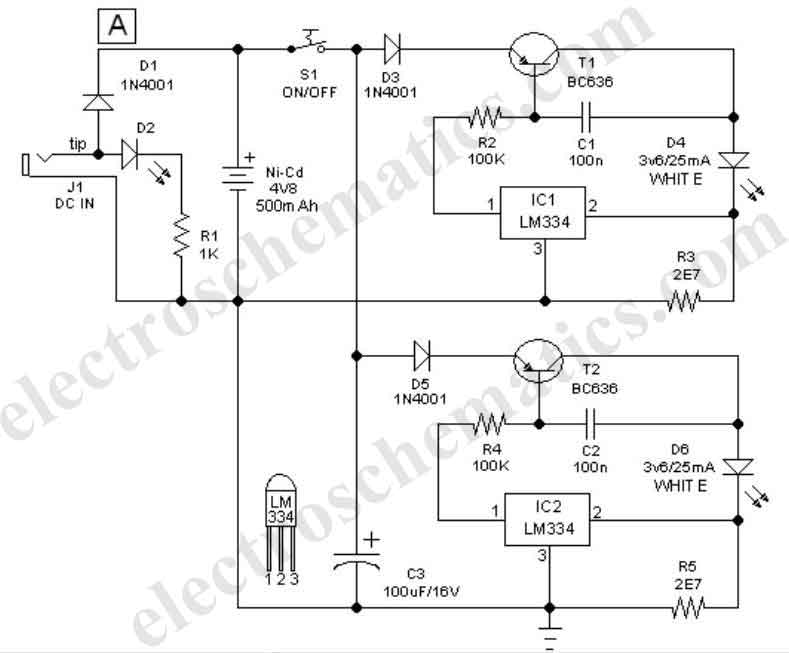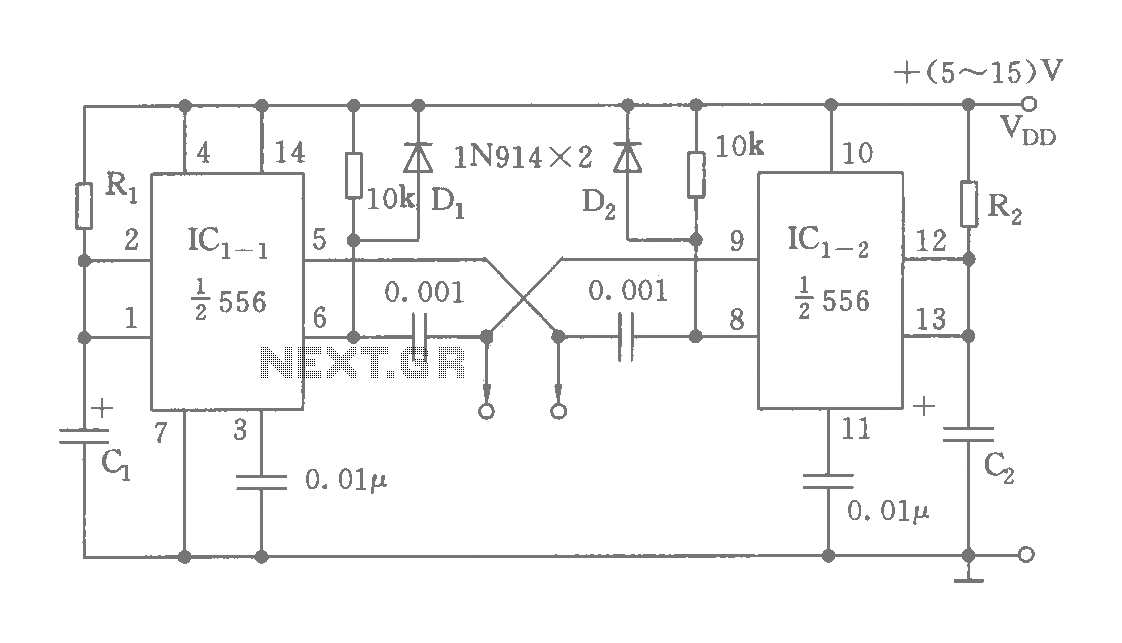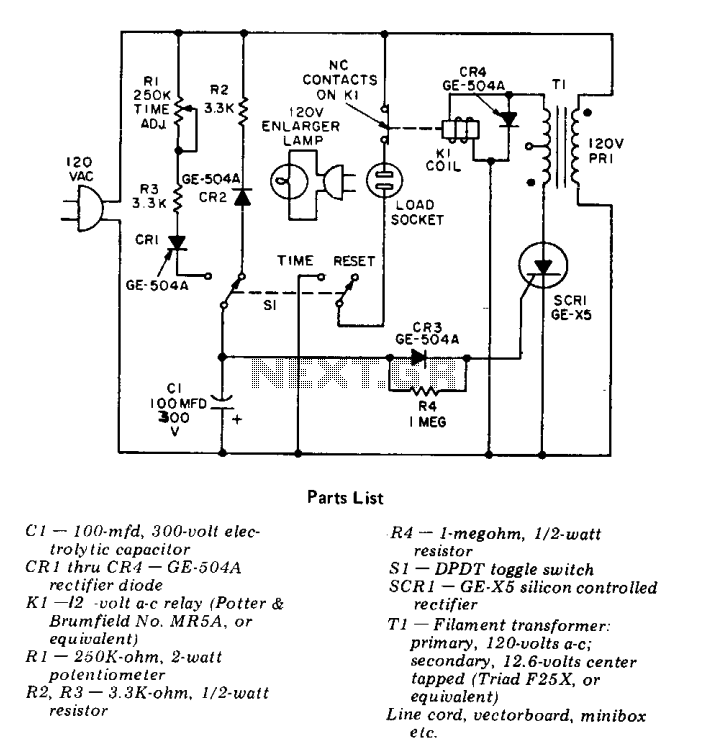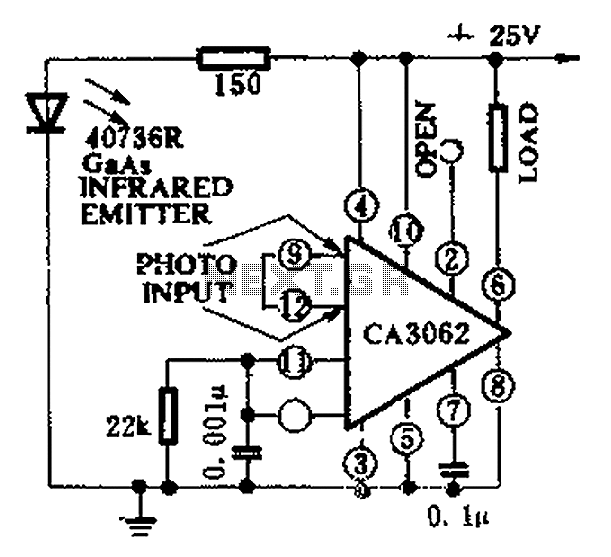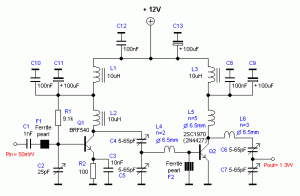
frequency counter circuit
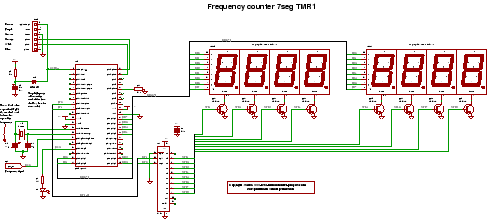
C code for a frequency counter circuit operating up to approximately 50 MHz, utilizing a multiplexed seven-segment display and employing Timer 1 to count the edges of the input signal.
The frequency counter circuit described operates effectively within the range of up to 50 MHz. It utilizes a microcontroller that is programmed with C code to manage the counting of signal edges, which is crucial for accurately determining the frequency of the input signal. The circuit incorporates a multiplexed seven-segment display to visually represent the counted frequency, allowing for easy reading and interpretation of the data.
The core of the circuit relies on Timer 1 of the microcontroller, configured to operate in a mode that allows it to count the rising or falling edges of the input signal. This configuration is essential for capturing the frequency accurately. The microcontroller is programmed to increment a counter each time an edge is detected, with the count being displayed on the multiplexed seven-segment display.
The multiplexing of the display is achieved by rapidly switching between the segments of each digit, which creates the illusion of a steady display. This method is efficient and allows for the use of fewer pins on the microcontroller while still providing a clear output. The C code handles the timing of the multiplexing and ensures that the display is updated in synchronization with the counting process.
In summary, the frequency counter circuit integrates a microcontroller, Timer 1 for edge detection, and a multiplexed seven-segment display to provide an accurate and user-friendly method for measuring frequencies up to 50 MHz. The design and implementation of this circuit highlight the importance of precise timing and effective display management in electronic frequency measurement applications.and C code for a frequency counter circuit operating up to about 50MHz using a multiplexed seven segment display and uses timer 1 to count edges of the input signal.. 🔗 External reference
The frequency counter circuit described operates effectively within the range of up to 50 MHz. It utilizes a microcontroller that is programmed with C code to manage the counting of signal edges, which is crucial for accurately determining the frequency of the input signal. The circuit incorporates a multiplexed seven-segment display to visually represent the counted frequency, allowing for easy reading and interpretation of the data.
The core of the circuit relies on Timer 1 of the microcontroller, configured to operate in a mode that allows it to count the rising or falling edges of the input signal. This configuration is essential for capturing the frequency accurately. The microcontroller is programmed to increment a counter each time an edge is detected, with the count being displayed on the multiplexed seven-segment display.
The multiplexing of the display is achieved by rapidly switching between the segments of each digit, which creates the illusion of a steady display. This method is efficient and allows for the use of fewer pins on the microcontroller while still providing a clear output. The C code handles the timing of the multiplexing and ensures that the display is updated in synchronization with the counting process.
In summary, the frequency counter circuit integrates a microcontroller, Timer 1 for edge detection, and a multiplexed seven-segment display to provide an accurate and user-friendly method for measuring frequencies up to 50 MHz. The design and implementation of this circuit highlight the importance of precise timing and effective display management in electronic frequency measurement applications.and C code for a frequency counter circuit operating up to about 50MHz using a multiplexed seven segment display and uses timer 1 to count edges of the input signal.. 🔗 External reference
